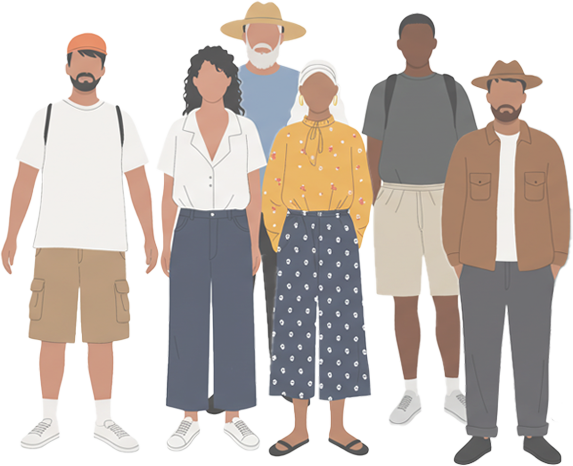

Support for foreigners
Purpose of Supporting Foreigners in Disasters
Our goal is to ensure that foreign residents affected by the disaster are not isolated or unable to receive support due to language and cultural barriers, lack of understanding of the situation, etc., and to provide support that gives all disaster victims, including foreign residents, a sense of security. To this end, we will work with Kyotamba Town to establish the following five systems.
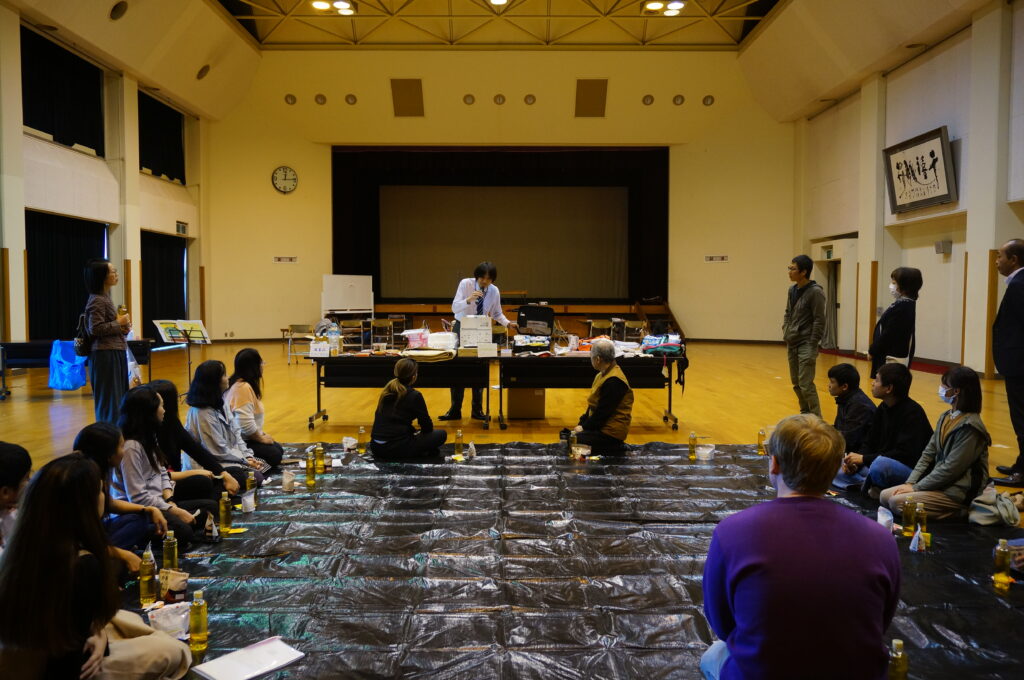
purpose01
Provide information
Our goal is to ensure that foreign residents affected by the disaster are not isolated or unable to receive support due to language and cultural barriers, lack of understanding of the situation, etc., and to provide support that gives all disaster victims, including foreign residents, a sense of security. To this end, we will work with Kyotamba Town to establish the following five systems.
purpose02
Support for evacuation and rescue activities
Provide necessary support to foreigners to enable them to access shelters and support activities. For example, arrange for interpreters and provide support for the specific needs of foreign nationals.
purpose03
Livelihood support
Provide basic post-disaster livelihood support such as food, medical care, clothing, and housing.
purpose04
Cultural considerations
Ensure that religious considerations and meal options are provided for foreigners with different cultural backgrounds, as they may require special consideration in times of disaster.
purpose05
Mental Support
Provide support such as consuntation in native language to reduce mental stress and anxiety caused by disasters.
Initiatives
We are working with the town to establish the following items and to create an environment in which foreigners can safely take refuge beyond language and cultural barriers.
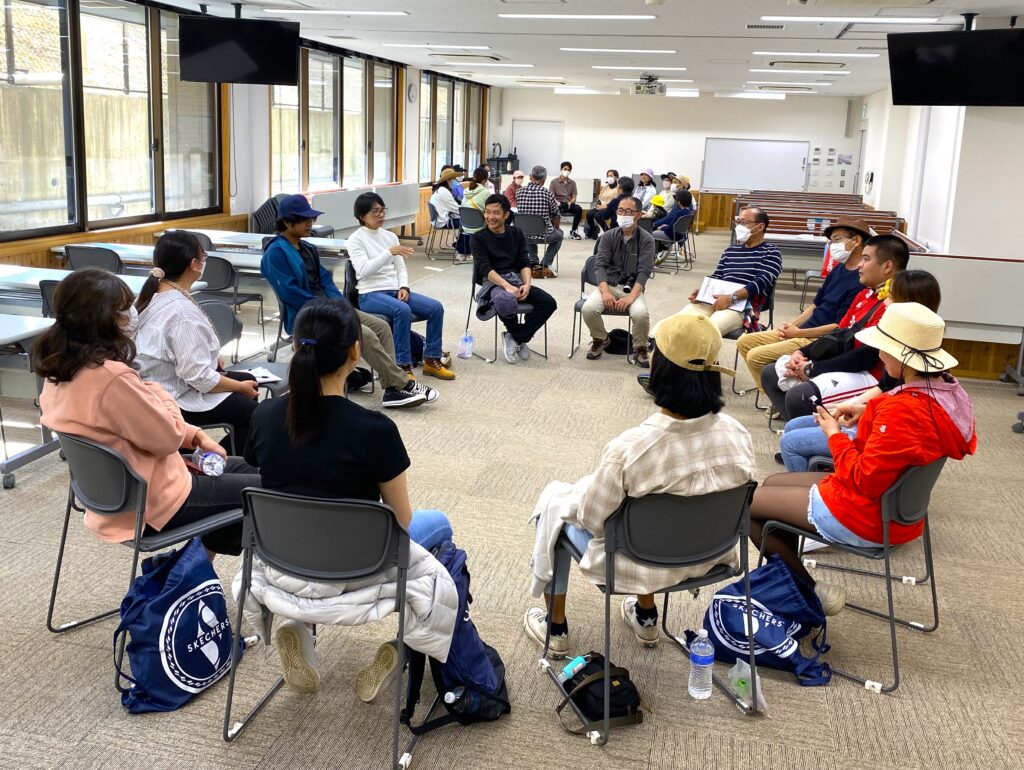
attempt01
Provision of multilingual information
Multilingualization of disaster prevention information: Provide information in languages that foreigners can understand during disasters such as earthquakes, typhoons, and tsunamis.
attempt02
Disaster Prevention Training for Foreigners
- Provide opportunities for foreigners to learn about daily preparedness, how to use evacuation shelters, and what to do in an emergency, together with Japanese people.
- Disaster prevention training in “easy Japanese”, avoiding difficult words.
attempt03
Connecting foreign residents with Japanese residents
Hold exchange events and other activities to help people get to know each other on a daily basis so that they can help each other in the event of a disaster.
attempt04
Response at evacuation centers
- Develop a manual for accepting foreign residents: support for those who have different cultures, religions, and diets.
- Use of pictograms: Intuitive and easy to understand even if you don't speak the language.
attempt05
Support using SNS and the Internet
- Disseminate information on the website in multiple languages.
- Disaster information on SNS such as Instagtram and Facebook.
Disaster Prevention Information
It is necessary to be prepared for earthquakes, typhoons, heavy rain, and heavy snowfall on a daily basis.
You never know when or where a disaster will strike. By being prepared in your daily life, you will be able to act calmly.
【If you are indoors】
1. Protect yourself
Get under a sturdy desk or table to protect your head and body.
Protect your head with a cushion or bag.
Move away from windows, light fixtures, and shelves.
Wear slippers or shoes.
2. Check the source of the fire
If gas or a stove is being used, turn off the fire after the tremors stop.
Do not try to put out the fire by force.
3. Secure evacuation routes
Open doors and windows to secure exits (especially in apartments and buildings).
Never use elevators.


【If you are outdoors】
1. Move away from buildings
Move away from building walls, glass, signboards, and vending machines.
Avoid areas where there is a risk of falling objects or collapse.
2. Move to a large area
Move to a safe place, such as a park or open space, using safe routes.
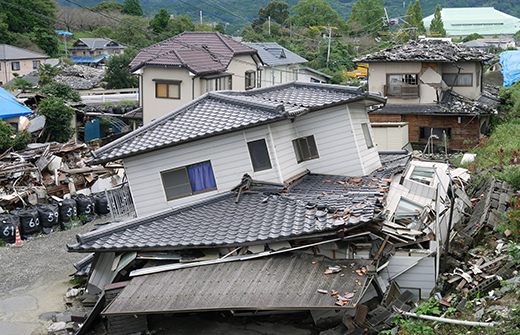

【If you are driving a car】
1. Slowly come to a stop
Turn on the hazard lamps, check your surroundings, and stop the car gradually.
Pull over to the shoulder of the road as far as possible, not in the middle of the road.
2. When leaving the car and evacuating
Turn off the engine and leave without locking the doors with the key in the ignition.
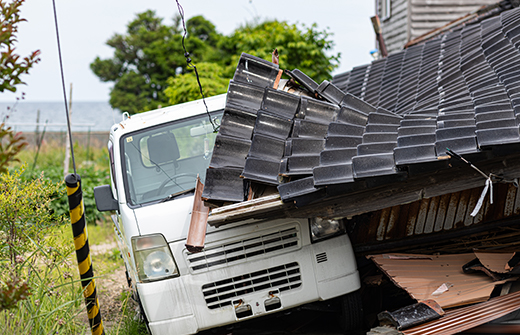
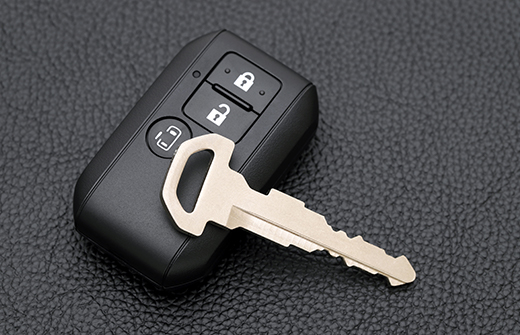
【After the shaking stops】
1. Confirm accurate information
Collect earthquake information on TV, radio, and smartphones.
Do not be misled by false rumors. Use official sources of information (Japan Meteorological Agency, local governments, etc.).
2. When evacuation is necessary
If there is a danger of tsunami or fire, evacuate immediately.
When evacuating, carry only the minimum amount of belongings (emergency bag).
Keep in touch with family and acquaintances (use the Disaster Message Dial “171”, etc.).
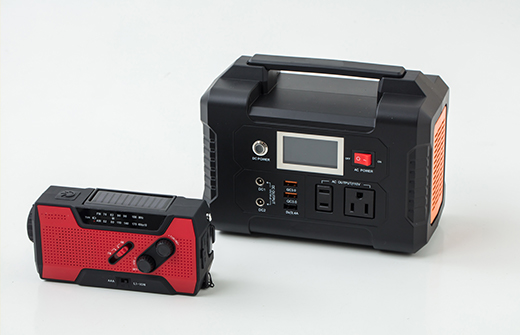
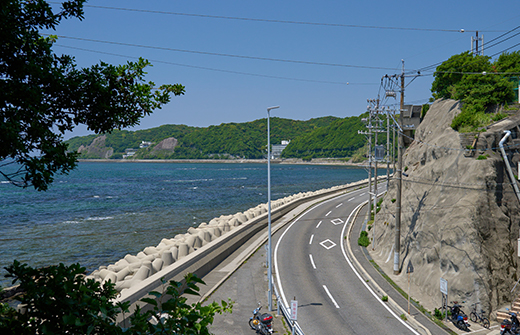
【Things to be prepared for】
1. Prepare an emergency bag.
Prepare drinking water, food, flashlight, mobile battery, first aid kit, helmet, etc.
2. Decide how to contact family members.
Discuss meeting places and safety confirmation methods in advance.


Kyotamba Town Disaster Prevention Hazard Map

A hazard map is a map showing the extent of damage predicted from natural disasters.
It is used to identify disaster risks and evacuation procedures in your area of residence.
About Disaster Prevention Hazard Maps
This booklet lists hazardous areas such as flood-prone zones and landslide hazard zones in case of flooding due to river overflows caused by heavy rainfall, as well as information on disaster prevention such as evacuation centers.
It is important to be aware of dangerous areas on a daily basis.
Consider evacuation methods, evacuation routes, and evacuation sites in case of danger.
Acquire knowledge about disaster prevention so that you can make decisions on your own.
Check "Kyotamba Town Disaster Prevention Hazard Map"
*Check where your house is located on a hazard map and mark the location.
Hazard maps are colored maps showing areas where there is a high risk of flooding or landslide disasters. Disasters may occur even in areas that are not colored. Disasters may occur even in areas that are not colored.
Are the areas where your house is located colored?
Even if your house is not colored, if you live on land that is lower than the surrounding area or near a cliff, please evacuate as necessary, referring to the evacuation information from Kyotamba Town.
Disaster information
Check the latest information on disaster prevention.
Check the latest information on disaster prevention.
・Disaster Prevention and Weather Information: Multilingual Dictionary Data in 14 languages (Japan Meteorological Agency)
Japanese, English, Chinese (simplified/traditional), Korean, Spanish, Portuguese, Indonesian, Vietnamese, Tagalog, Thai, Nepali, Khmer, Myanmar, Mongolian
https://www.jma.go.jp/jma/kokusai/multi.html
・Multilingual Dictionary Data
http://www.data.jma.go.jp/developer/multilingual.html
・Disaster information in foreign languages (NHK WORLD-JAPAN)
https://www.nhk.or.jp/nhkworld-blog/
・Multilingual dictionaries of Earthquake Early Warning (JMA, Cabinet Office, Japan Tourism Agency)
English, Chinese (simplified and traditional), Korean, Spanish, Portuguese, and easy Japanese
http://www.jma.go.jp/jma/press/1510/29a/tagengo20151029_dictionary.pdf
・The page where the dictionary is availabl
http://www.jma.go.jp/jma/press/1510/29a/tagengo20151029.html
・Multilingual Pointing Boards for Use at Evacuation Shelters (Japan Council of Local Authorities for International Relations)
http://www.clair.or.jp/j/multiculture/tagengo/yubisashi.html
・Multilingual Support in Times of Disaster (Japan Council of Local Authorities for International Relations)
・A guide to multilingual support in times of disaster
・Multilingual Information Creation Tool for Disasters (Japan Association of Local Authorities for International Relations)
・Multilingual Disaster Information Creation Tool ・Multilingual Disaster Information Example Collection, etc.
http://www.clair.or.jp/j/multiculture/tagengo/saigai.html
・Multilingual disaster prevention video “Earthquake! What to do then? 12 languages (Sendai Tourism International Association)
http://int.sentia-sendai.jp/j/life/bousai.html
Useful Links for Disaster Prevention
Event
-
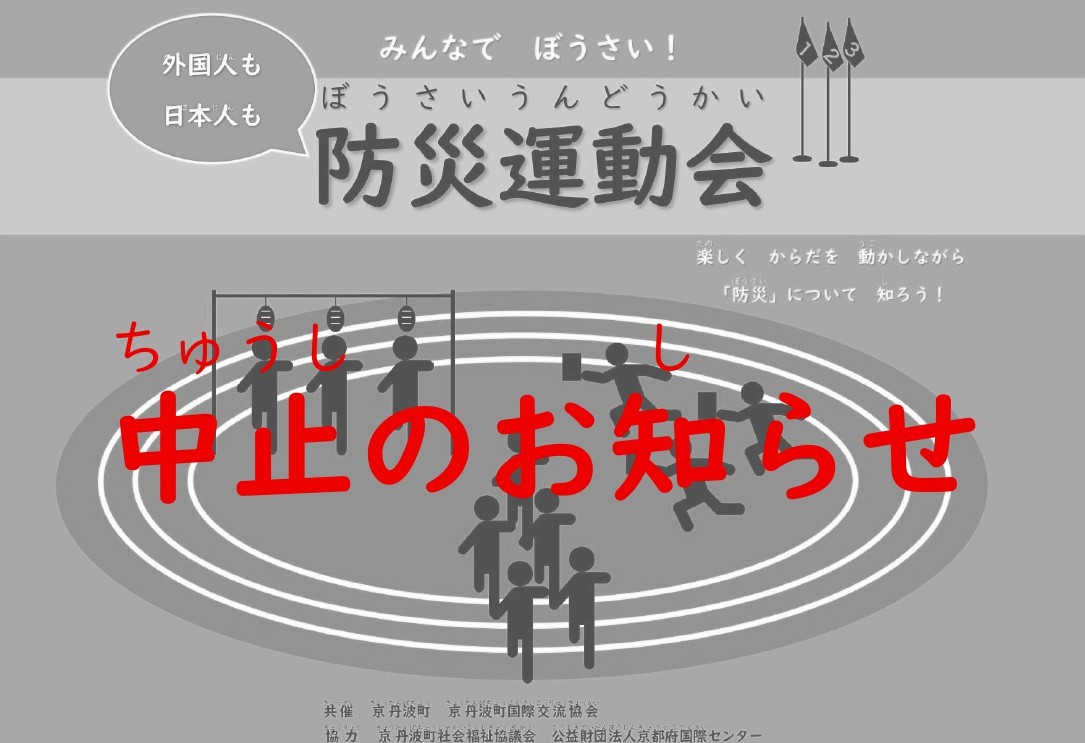
Notice of Cancellation: ‘Everyone's Disaster Prevention! Disaster Prevention Sports Day’
Notice of Cancellation: ‘Everyone's Disaster Prevention! Disaster Prevention Sports Day’
-
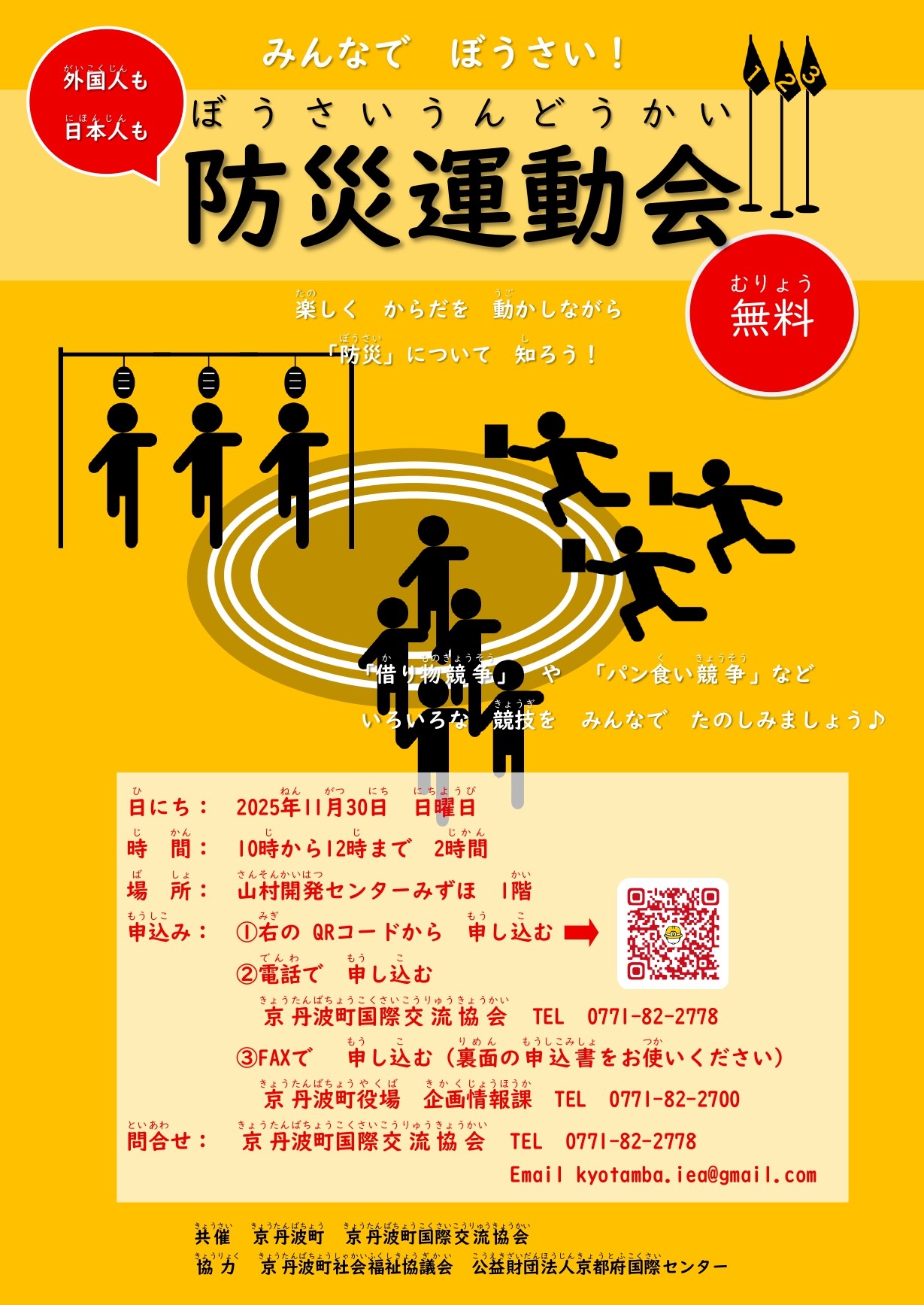
Let's All Prepare for Disasters! “Disaster Prevention Sports Day”
Foreigners and Japanese Together
Learn about disaster preparedness while having fun and getting active!♪ -

Cooking Event “Delicious Filipino Cuisine” Now accepting participants!
Let's deepen our understanding of the Philippines through Filipino cuisine♪
Consultation on daily life
Who can use it
Please consult with us about any problems in your daily life, procedures at the town hall, etc. Consultants will provide advice and information.
Consultations are also available for Japanese nationals who have a relationship with a foreigner.
How to consult
Consultations are conducted in “easy Japanese”.
You can also use a translator to consult in your own language.
First, please make an appointment for consultation by e-mailing (kyotamba.iea@gmail.com) or by using Contact form .
Useful links for living in Japan







